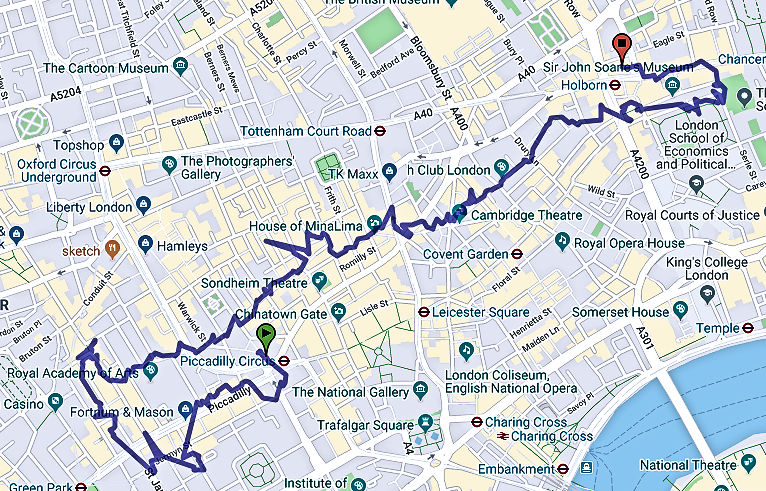|
In April 1951, the Canadian businessman W. Garfield Weston acquired the
store and became its chairman following a boardroom coup In 1964, he
commissioned a four-ton clock to be installed above the main entrance of
the store as a tribute to its founders. Every hour, 4-foot-high (1.2 m)
models of William Fortnum and Hugh Mason emerge and bow to each other,
with chimes and 18th-century–style music playing in the background.
Since Garfield Weston's death in 1978, the store has been run by his
granddaughters, Jana Khayat and Kate Weston Hobhouse. We did
not know about the spiral staircase, picture from the web. |
|
Rodić Davidson Architects is hosting an exhibition of
new work by automata maker, Paul Spooner
“The plan is to make six objects; one for each of the six windows
looking onto Bury Place. Two are done, two are thought of and two are
neither done nor thought off.”
The pieces will start to arrive in mid-March 2019.
Done: ‘Physics for Cats’. Powered by a mouse wheel, a version of
Galileo’s Inclined Plane apparatus gradually tilts a track on which a
cat on a trolley is free to roll. When the forces of friction and
gravity are overcome the cat travels from one end of the track to the
other. Momentum is destroyed by buffers at either end of the track and
springs that absorb some of the shock. A pair of boxwood spheres hanging
under the cat’s tail demonstrate inertia.
Done: ‘Cork Cathedral’. There are two cathedrals in the city of Cork.
The Protestant one was designed in the Gothic Revival style by William
Burges, architect of Cardiff Castle and nearby Castel Coch. There are
several towns that are named after building materials; Stone in
Staffordshire and Boulder, Colorado, for example, but none offer as much
fun for the playful mechanic as Cork and its Belgian twin, Liège.
Thought of: ‘Solid, Liquid, Gas’ and ‘We want a Window and we want it
Here’.
Paul Spooner (b. 1948)
Despite having an engineer for a father, Paul Spooner went to art school
and despite receiving an art education from three of the titans of the
business, Harry Thubron, Jon Thompson and Tom Hudson, he never became a
proper artist but, in his early thirties, took up the then almost
extinct profession of automatist. A series of fortunate circumstances
led him from the schoolteaching and lorry driving jobs he’d done after
art school; he moved to Cornwall with his wife Sue, he met Peter Markey,
who had been making mechanical sculptures and selling them in Sue
Jackson’s shop, Cabaret, in Falmouth. Cabaret Mechanical Theatre became
a destination for enthusiasts of mechanical playthings, with works by
Paul, Peter Markey and Ron Fuller. Paul installed “The Last Judgement”,
a coin-operated machine, in the window of the shop and used the proceeds
to buy a lathe. Since then he hasn’t stopped producing devices, made
mostly of wood, mostly small enough to fit on a mantelpiece but
sometimes of more ambitious sizes.
Ben Davidson, Rodic Davidson Architects says:
The influence of the Cabaret Mechanical Theatre in Covent Garden, in
part, defined my direction in life. I remember visiting on many
occasions, in my teens, on family trips to London from Cheltenham, where
I grew up. I was utterly fascinated and the influence, I am sure, formed
part of my decision to study architecture and my continued love of
experimentation, exploration and tinkering with models and mechanical
things.
Rodic Davidson Architects is based very close to the old location of
Cabaret. The practice occupies premises at 1 Pied Bull Yard in
Bloomsbury - no more than a 10min walk away from the basement vaults in
Covent Garden market that Cabaret occupied between 1984 and 2000 |
